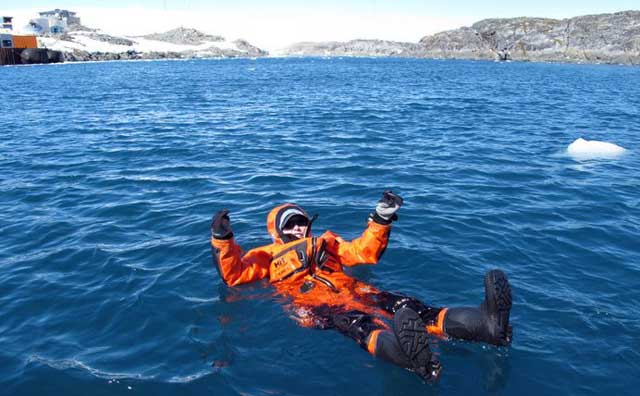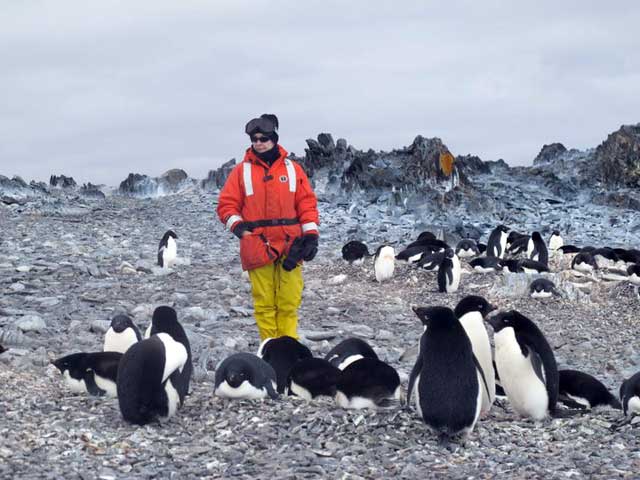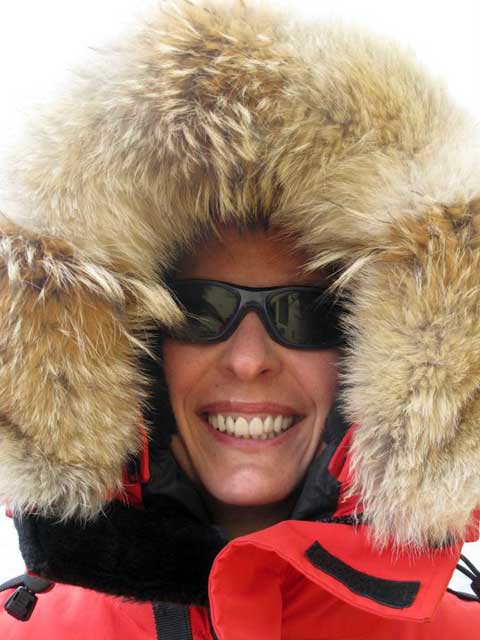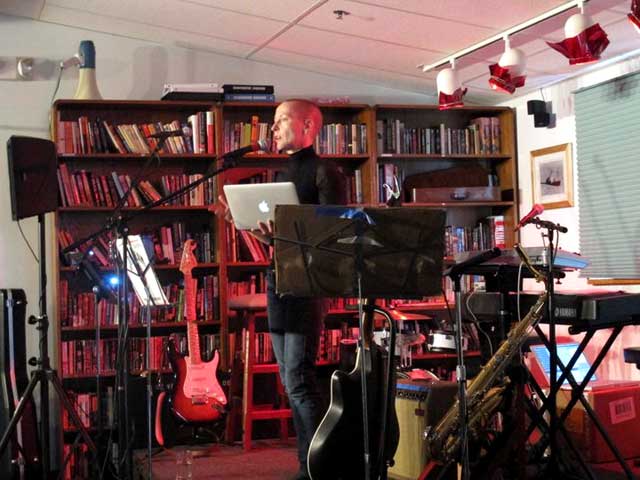|
Not flatNew poetry book about Antarctica is well rounded with versePosted August 9, 2013
Poet Katharine Coles So it certainly wasn’t a stretch that her interest in science would take her to Antarctica on a grant from the National Science Foundation’s Artists and Writers Program 1. Why a book of poetry about Antarctica? What attracted you to the Ice? I tend to be attracted to extreme places, and Antarctica is about as extreme as you can get without leaving the planet. (My husband jokes that he's glad there's not an NSF Galactic Artists and Writers Program.) Really, I am interested in situations that jolt me out of my sense of normalcy, that turn me into a stranger. I find them very productive. 2. Would you talk about the title of the collection, The Earth is Not Flat? My sense is that the title is a reference to your own journey of exploration of this place that for many remains just an abstraction — a flat white space that your poetry gives color and shape. Yes. We were actually thinking about using an old map for the cover — one with a “here be monsters” thing going on at the edge, with the idea that Antarctica is beyond the boundaries of the “known” world. But in some ways, that idea didn’t really represent the place, or the book, very well. Once you’ve been there, the place — in all its splendor and mystery — is NOT “an abstraction” or a place of monstrous legend after all. Even in all its specialness, it’s a place on the globe that is connected to every other place, and no matter where you are on the globe you are standing at a convergence of sorts. 3. The first line of your first poem in the book is “If you wanted to be first/You live in the wrong time.” This idea of being the first — the first to explore a place — seems to resonate through the collection. I always think that the poet has the tough job of disassociating from the usual “superlatives” (as your tourist mentions in one piece) and finding new ways of expressing the experience of those who came before. How challenging was it to bring a fresh voice to the subject? The idea of it was a little daunting — you never know until you’re in a place whether you’ll be able to see it and voice it well. And, in this case, there was always the fear that I’d end up with 50 not-very-good poems about penguins. The way in for me was my interest in perception, and the ways in which the landscape there — what with reflection, refraction, mirage — really messes with our perceptions. If I could be precise about that, I felt I was succeeding. 4. The book seems to follow a rough chronology of your journey, from “Proposal” to “Sailing to Antarctica” to “Walking the Glacier” to “Exit Interview” and with plenty of poems in between. What was your process for writing this book? Did you write the poems in situ, so to speak, or after you returned home? Usually when I am adventuring I take notes from which I compose later — it can take me five years to write and polish a collection — but this time I did a surprising amount of writing in situ, as you say. The overwhelming richness of the experience really pushed me to respond quickly and continually. I had tremendous sense of urgency, as there was a limited time to capture the experience before it evaporated. The collection was finished (or nearly so — I added a couple of late poems) in about six months, mostly in a kind of fever. 5. Speaking of home, it was obvious you missed your home, your husband, your dog … Oftentimes, travel narratives focus on the adventure. But we know that explorers like Scott and Shackleton thought of those left behind, particularly their wives. Were you thinking of their homesickness even as you dealt with your own disconnection from home? (By the way, I assume you have more of an affinity for Ernest Shackleton, based on several allusions you make to him through the book.) Well, I've been doing more research on [Robert F.] Scott lately, and [Roald] Amundsen, but I was actually reading Shackleton at the time, deeply in him, so he is, yes, very present in the collection. As for homesickness, for me estrangement and separation are really part of the poetic experience — I actually seek them. Which makes me feel guilty, more than anything. My husband and I had never been apart that long, and he was very worried about me. And the dog, who basically lived to be near me, was ANCIENT. Or perhaps I was displacing my own homesickness onto worrying about them and whether they would make it through. 6. Many who have participated in the Antarctic Artists and Writers Program have said they were changed by the experience, some so radically that their entire aesthetic changed. Do you feel your experiences influenced the way your write or approach poetry? If so, how? Absolutely. I mentioned already that I had never written so quickly. And it turns out there are advantages to quickness — it doesn’t have to come with carelessness. For one thing, a fast-moving poem can achieve a kind of lightness (in the Calvino sense), something I really like, as well as an expansiveness — in its velocity, it can take in a lot more. And making poems that are light and expansive make the poet light and expansive too, I think. Also, there were certain forms, such as the erasure and the cento, that I hadn't imagined myself using before, until this material seemed to require them. Now I am using them all the time. Perhaps a place that is so radically different from what one is used to elicits — requires, even — a whole new set of responses and techniques. When we talk about a place changing us, it can do that in many ways. One of these, in the case of an artist, is by forcing her to change her art, her tool of perception, to meet the encounter. If my poems are lighter, more expansive, more integrated, more full of atmospheric deceptions and subject to vanishing, then so am I. 
Photo Credit: Jennifer Bogo
Kate Coles tests her immersion suit during a boating class at Palmer Station.
7. I understand you have a second book in the works about your experiences in Antarctica. Would you talk about that? This one will be more historical. I just got back from working in the archives in the Scott Polar Research Institute 8. Anything you’d like to add? I am glad to have crossed the Drake [Passage] by ship — an experience you don’t get if you go to McMurdo [Station] NSF-funded research in this article: Katharine Coles, Antarctic Artists and Writers Program, Award No. 0840023 |



For USAP Participants |
For The Public |
For Researchers and EducatorsContact UsU.S. National Science FoundationOffice of Polar Programs Geosciences Directorate 2415 Eisenhower Avenue, Suite W7100 Alexandria, VA 22314 Sign up for the NSF Office of Polar Programs newsletter and events. Feedback Form |




